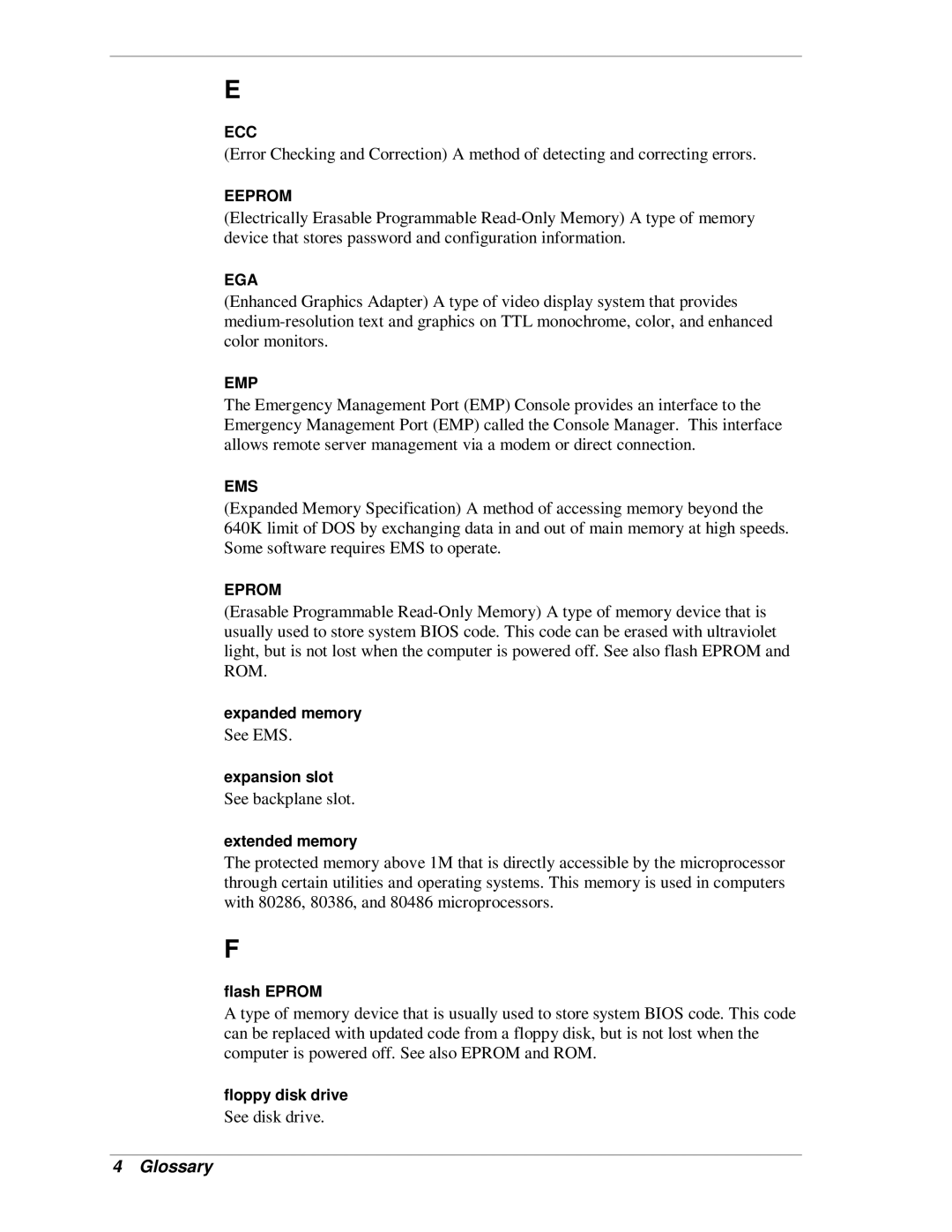
E
ECC
(Error Checking and Correction) A method of detecting and correcting errors.
EEPROM
(Electrically Erasable Programmable
EGA
(Enhanced Graphics Adapter) A type of video display system that provides
EMP
The Emergency Management Port (EMP) Console provides an interface to the Emergency Management Port (EMP) called the Console Manager. This interface allows remote server management via a modem or direct connection.
EMS
(Expanded Memory Specification) A method of accessing memory beyond the 640K limit of DOS by exchanging data in and out of main memory at high speeds. Some software requires EMS to operate.
EPROM
(Erasable Programmable
expanded memory
See EMS.
expansion slot
See backplane slot.
extended memory
The protected memory above 1M that is directly accessible by the microprocessor through certain utilities and operating systems. This memory is used in computers with 80286, 80386, and 80486 microprocessors.
F
flash EPROM
A type of memory device that is usually used to store system BIOS code. This code can be replaced with updated code from a floppy disk, but is not lost when the computer is powered off. See also EPROM and ROM.
floppy disk drive
See disk drive.
